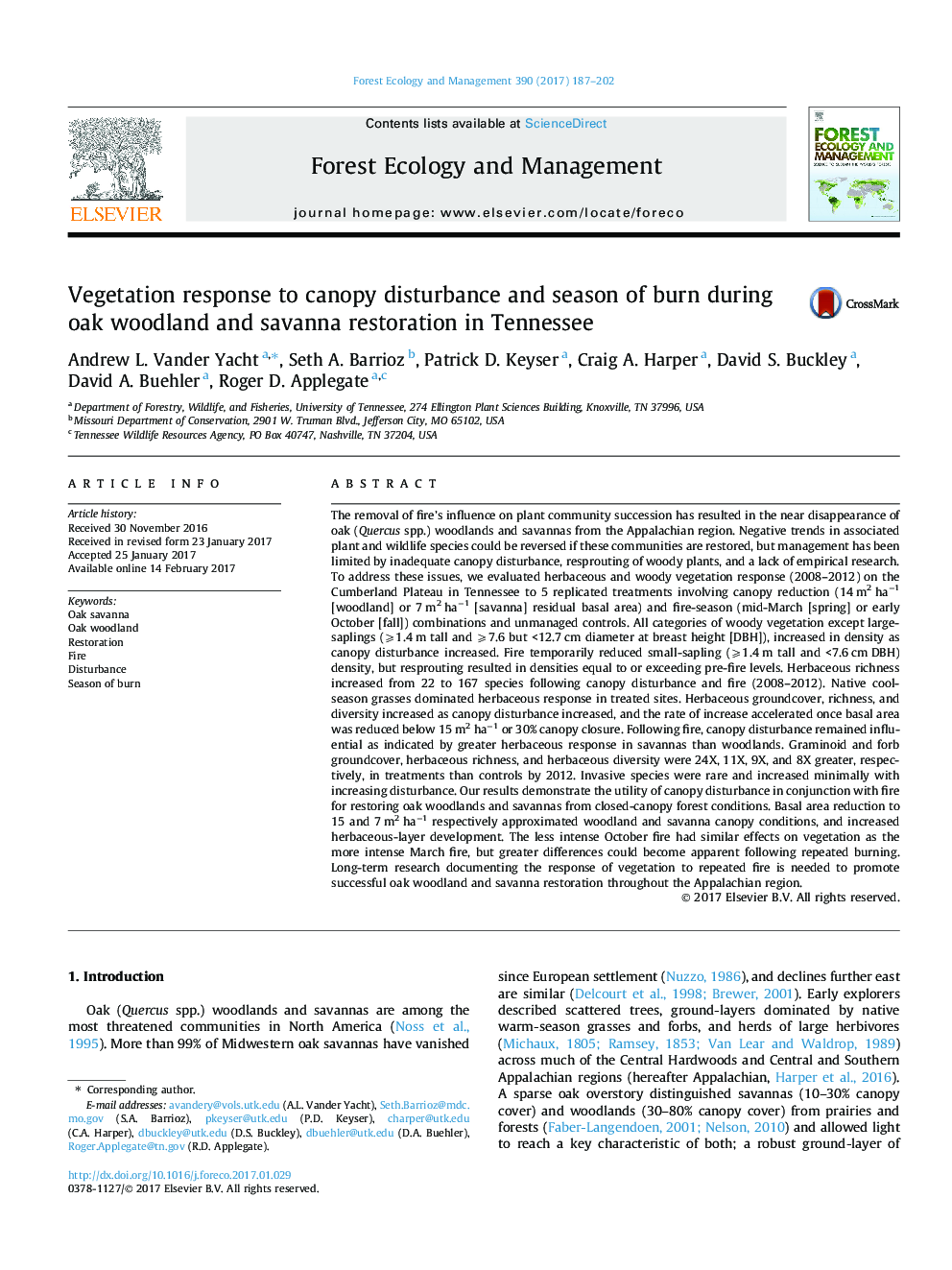| کد مقاله | کد نشریه | سال انتشار | مقاله انگلیسی | نسخه تمام متن |
|---|---|---|---|---|
| 6459529 | 1421368 | 2017 | 16 صفحه PDF | دانلود رایگان |
- Canopy disturbance released woody plants, and fire only achieved temporary control.
- Herbaceous groundcover and diversity increased following thinning and fire.
- Herbaceous-layer development increased in rate below 15Â m2Â haâ1 residual basal area.
- Fires in October were less intense than March, but had similar vegetation effects.
The removal of fire's influence on plant community succession has resulted in the near disappearance of oak (Quercus spp.) woodlands and savannas from the Appalachian region. Negative trends in associated plant and wildlife species could be reversed if these communities are restored, but management has been limited by inadequate canopy disturbance, resprouting of woody plants, and a lack of empirical research. To address these issues, we evaluated herbaceous and woody vegetation response (2008-2012) on the Cumberland Plateau in Tennessee to 5 replicated treatments involving canopy reduction (14 m2 haâ1 [woodland] or 7 m2 haâ1 [savanna] residual basal area) and fire-season (mid-March [spring] or early October [fall]) combinations and unmanaged controls. All categories of woody vegetation except large-saplings (⩾1.4 m tall and ⩾7.6 but <12.7 cm diameter at breast height [DBH]), increased in density as canopy disturbance increased. Fire temporarily reduced small-sapling (⩾1.4 m tall and <7.6 cm DBH) density, but resprouting resulted in densities equal to or exceeding pre-fire levels. Herbaceous richness increased from 22 to 167 species following canopy disturbance and fire (2008-2012). Native cool-season grasses dominated herbaceous response in treated sites. Herbaceous groundcover, richness, and diversity increased as canopy disturbance increased, and the rate of increase accelerated once basal area was reduced below 15 m2 haâ1 or 30% canopy closure. Following fire, canopy disturbance remained influential as indicated by greater herbaceous response in savannas than woodlands. Graminoid and forb groundcover, herbaceous richness, and herbaceous diversity were 24X, 11X, 9X, and 8X greater, respectively, in treatments than controls by 2012. Invasive species were rare and increased minimally with increasing disturbance. Our results demonstrate the utility of canopy disturbance in conjunction with fire for restoring oak woodlands and savannas from closed-canopy forest conditions. Basal area reduction to 15 and 7 m2 haâ1 respectively approximated woodland and savanna canopy conditions, and increased herbaceous-layer development. The less intense October fire had similar effects on vegetation as the more intense March fire, but greater differences could become apparent following repeated burning. Long-term research documenting the response of vegetation to repeated fire is needed to promote successful oak woodland and savanna restoration throughout the Appalachian region.
Journal: Forest Ecology and Management - Volume 390, 15 April 2017, Pages 187-202
